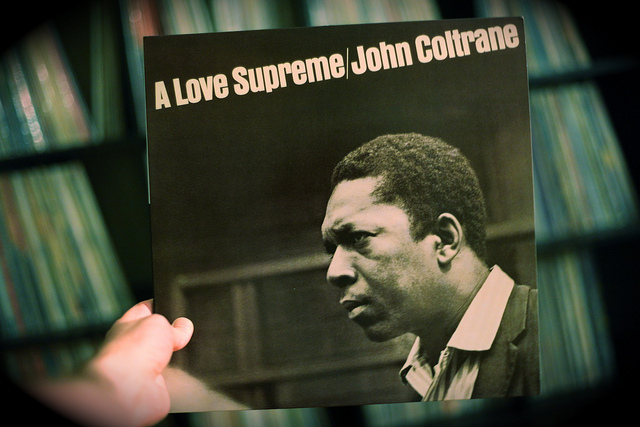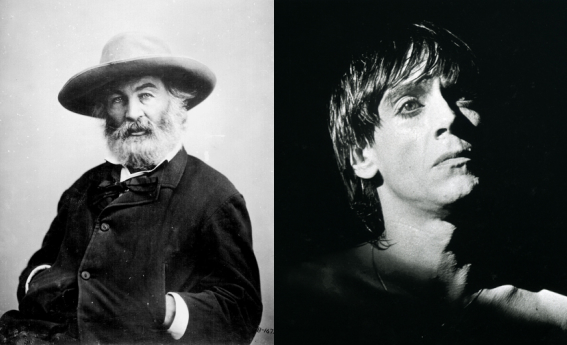“Histrionic” is not a word we often hear used as a compliment, describing as it does overwrought, theatrical, melodramatic behavior we tend to frown on in everyday life. In the opera world, however, one can rightly praise a diva like the late Maria Callas for her “histrionic power.” Jason Victor Serinus uses the phrase in an article on Callas for San Francisco Classical Voice, and also writes of Callas’ “coloratura agility,” “stylistic authenticity,” “mesmerizing stage presence” and “increasingly scandalous behavior.”
That last description refers in part to a break in Callas’ life and career in 1959 when she left her husband and manager Giovanni Battista Meneghini and took up with Aristotle Onassis. That relationship ended in heartbreak, and after several attempts to reclaim her former glory in the seventies, Callas’ own heart finally gave out: in 1977, she died of what may have been a drug-induced heart attack in Paris, her last years, writes Serinus, “a real tragedy of operatic proportions.”
We also, of course, think of another break in Callas’ life—with opera itself, which she left behind as her widely-praised vocal ability diminished rather dramatically in her 40s, an effect, perhaps, of rapid weight loss early in her career or—as critic and voice teacher Conrad Osborne speculates in an NPR profile—of a “lack of proper technique to sustain her ambitious repertoire.” And yet, writes NPR, it was Callas’ “imperfections” that “set her apart,” along with “her ability to find the emotional meaning in a role.” But as much as Callas has been lauded for her “sensational voice,” she has as often been derided in proportionately unflattering terms.
Critic Terry Teachout describes Callas’ voice as one of “ugly beauty,” taking a phrase from Thelonious Monk. The contrast expresses the range of opinions critics and audiences have held about Callas. While “much of what is written about her,” Teachout observes, “is the work of adoring fans whose worshipful prose is apt to make cooler heads a bit queasy,” those cooler heads have always found subtle and not so subtle ways of insulting her distinctive voice or striking looks. (“She contrived through sheer force of will to persuade audiences that she was a great beauty,” sneers Teachout, “with an even greater voice.”) Callas, in other words, inspires devotion and vituperation—but no one sees her perform and remains unmoved.
Was Maria Callas’ rise to fame a “con job,” as Teachout provocatively alleges? Isn’t all great performance something of a con? In any case, I doubt anyone could fool so many devoted opera fans into believing in characters as wholeheartedly as millions have believed in Callas’ Rosina from Rossini’s Barber of Seville (top from 1958), or in her Norma from Bellini’s challenging bel canto opera (below it, from the same year). Were audiences unable to see through the range of her stunning performances in the two Hamburg concerts from 1959 and 1962 (further down)? Could no one discern how flawed her Covent Garden performance, above, or her bravura turn in the title role of Bizet’s Carmen, below, both from 1962?
Of course they heard the flaws. They were part of her appeal. NPR quotes University of Southern California professor Tim Page, who points to Callas’ “ferocity” and “intensity” in the role of Carmen. Before Callas, singers “would concentrate only on nice melodies, prettily sung. Callas’ Carmen was not necessarily very pretty, but it was thrilling.” At the height of her powers, Callas brought a robust strength and personality to the opera that had been missing from the form, and recovered, writes Serinus, “a host of bel canto rarities that had ceded from the stage because of a decline in vocal technique among then-living singers.”
Though Callas’ own technique comes in for much critique—deservedly or not, I can’t say—no one can ever accuse her of timidity or conservatism in an arena that demands courage and flamboyance, that demands, in a word, “histrionics.” The history of 20th century opera, Serinus writes, can rightly be divided “with the terms B.C. and A.C.—Before Callas and After Callas…. [Her] ascendance put an end to the era of birdsong coloraturas who chirped their way through florid mad-scenes with little regard for their emotional import.” If a certain rough bravado and self-conscious self-fashioning is what it took to restore to so many roles their depth and gravity, so be it. Callas paid a price for her outsized voice and life, and you can hear it in her weakened farewell performance, above, from 1973. But her adoring fans will forever be grateful to her for it.
Related Content:
All the Great Operas in 10 Minutes
85,000 Classical Music Scores (and Free MP3s) on the Web
Josh Jones is a writer and musician based in Durham, NC. Follow him at @jdmagness



